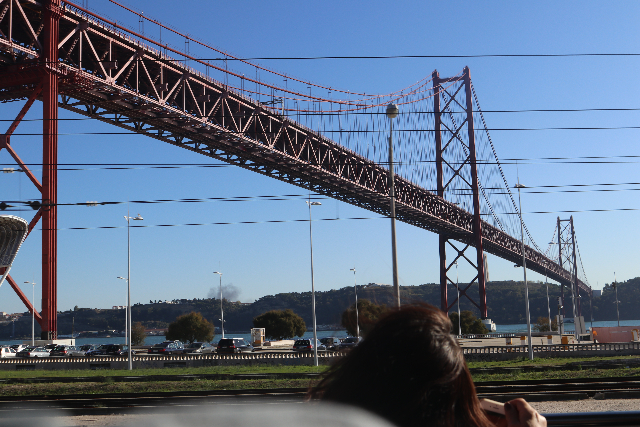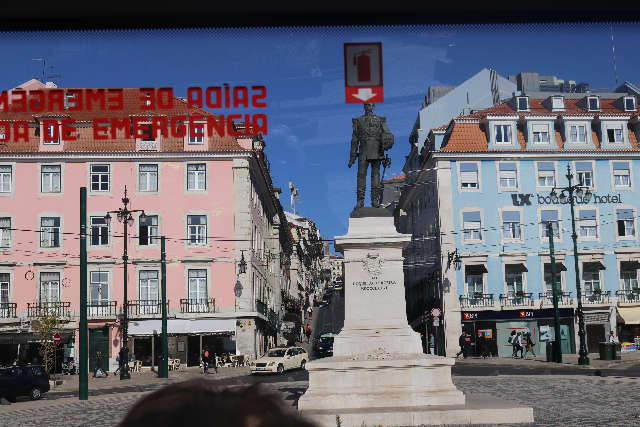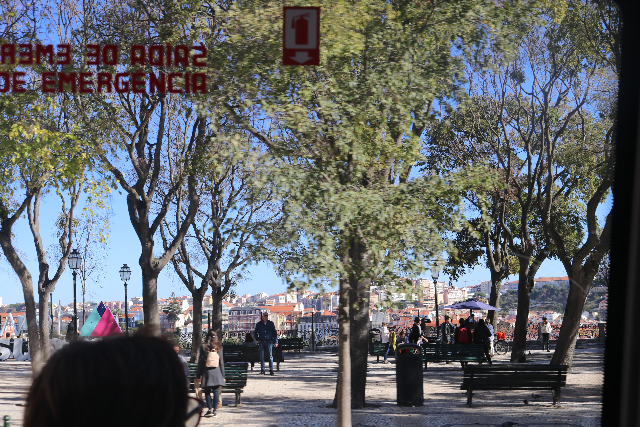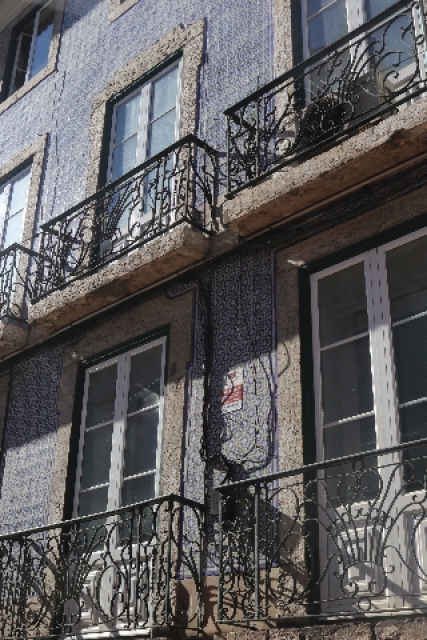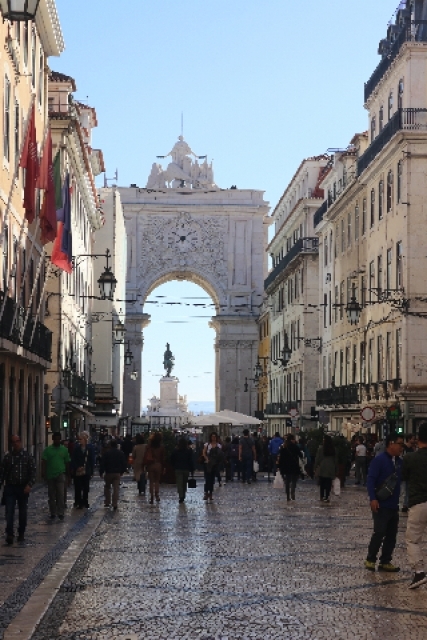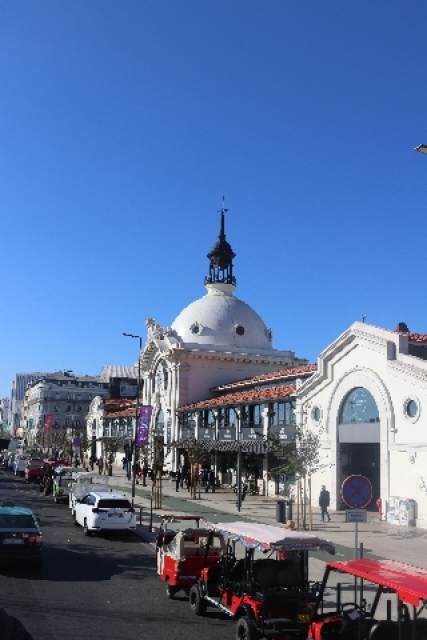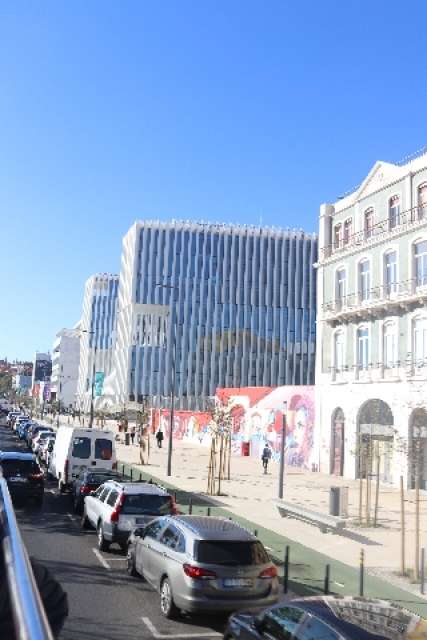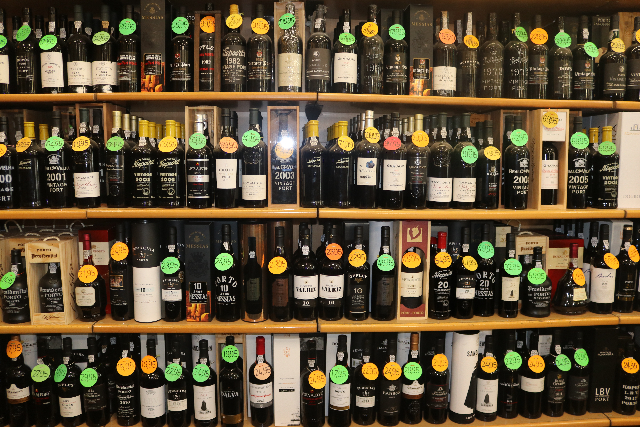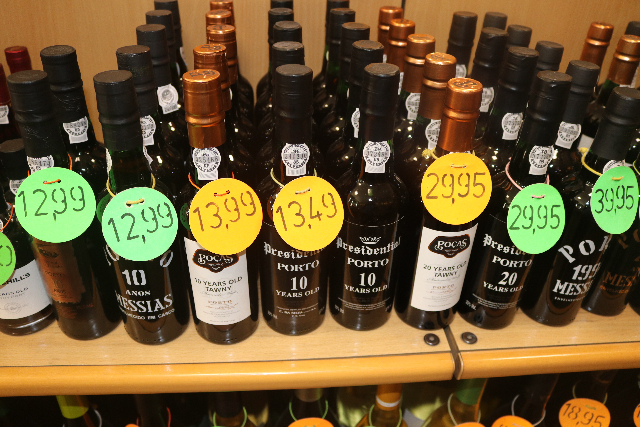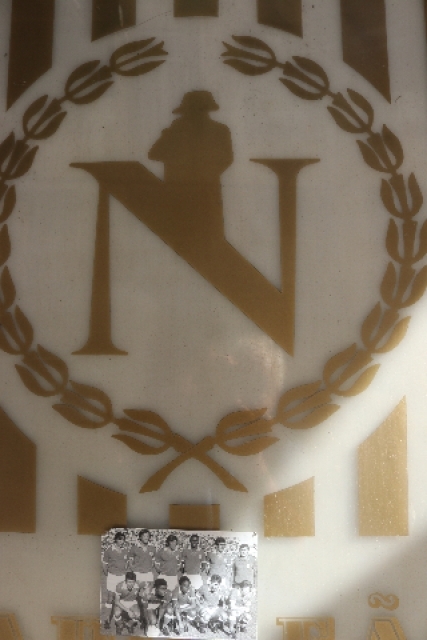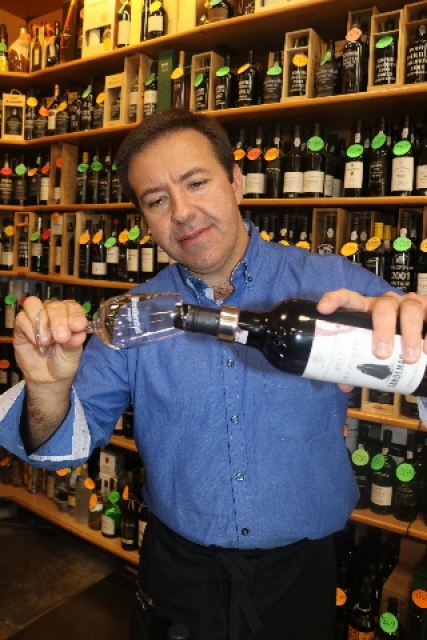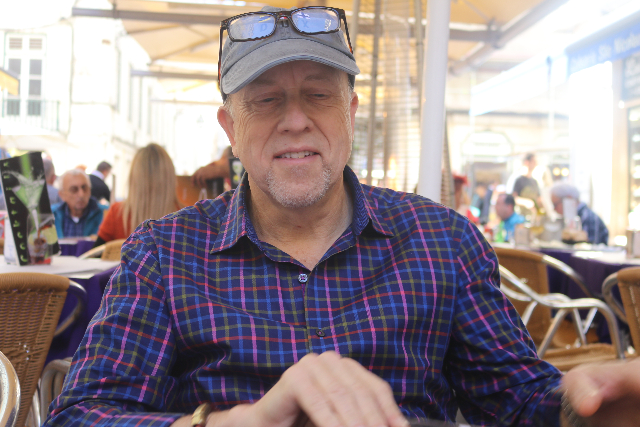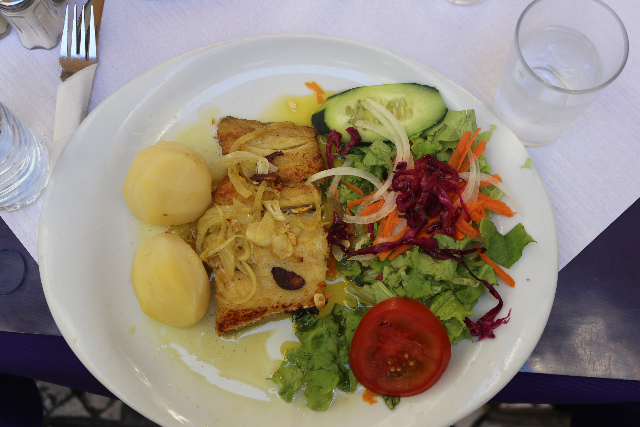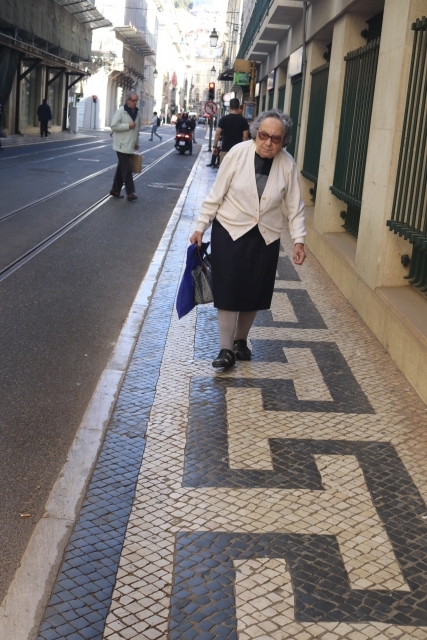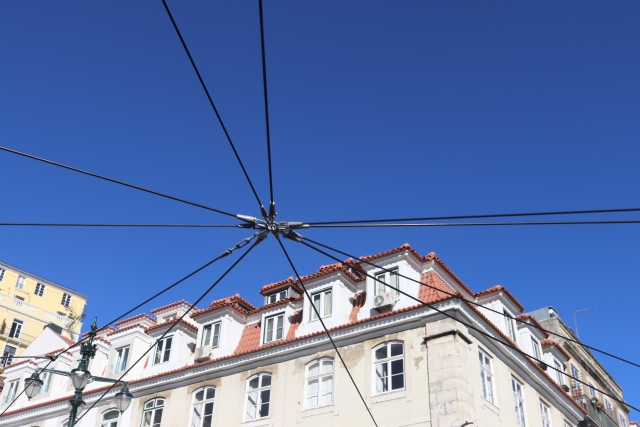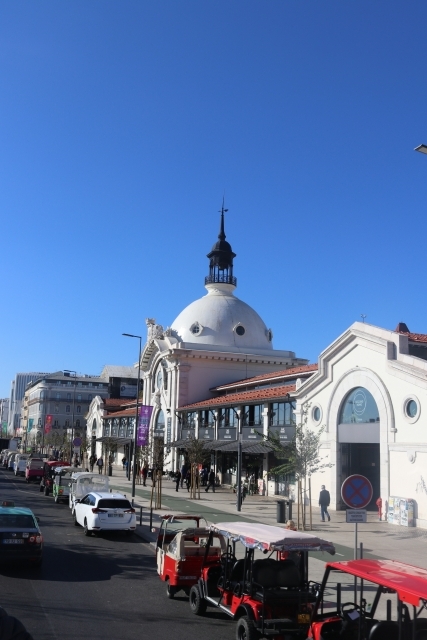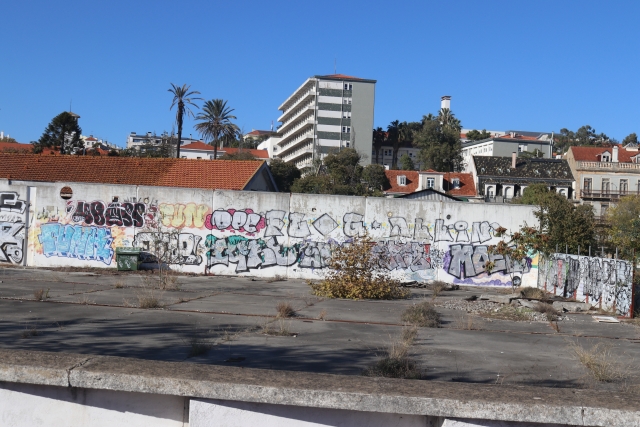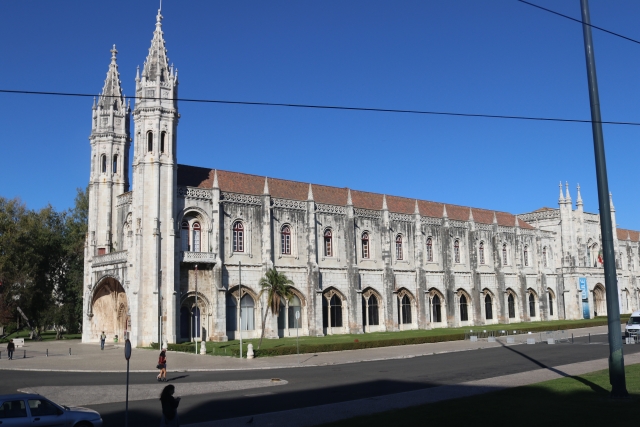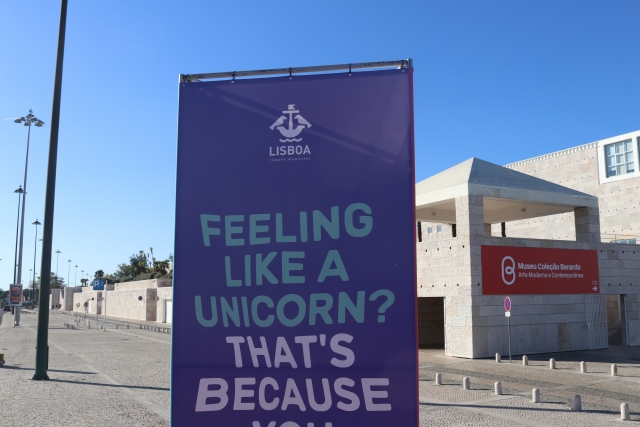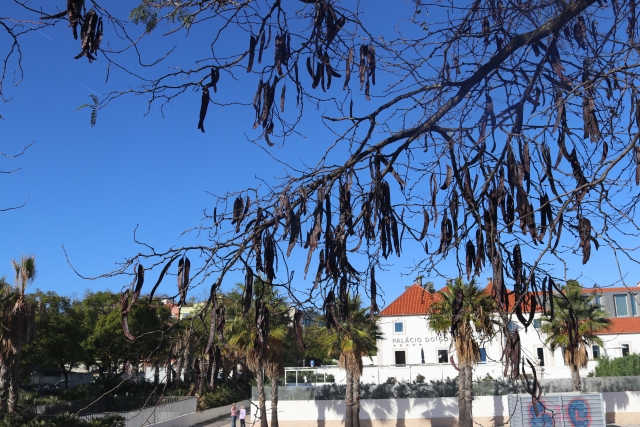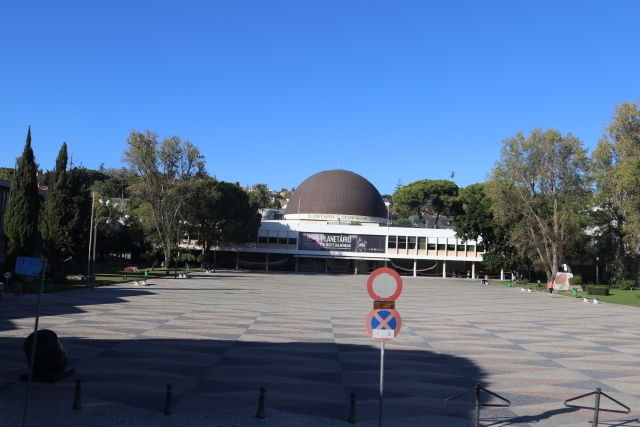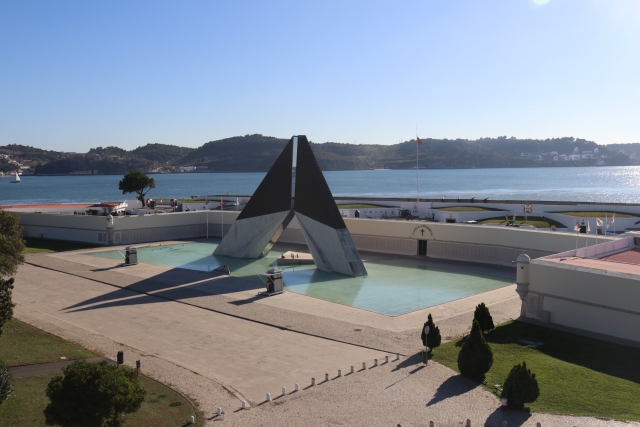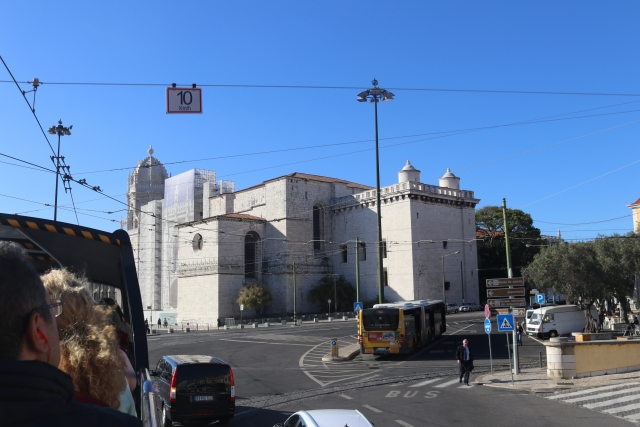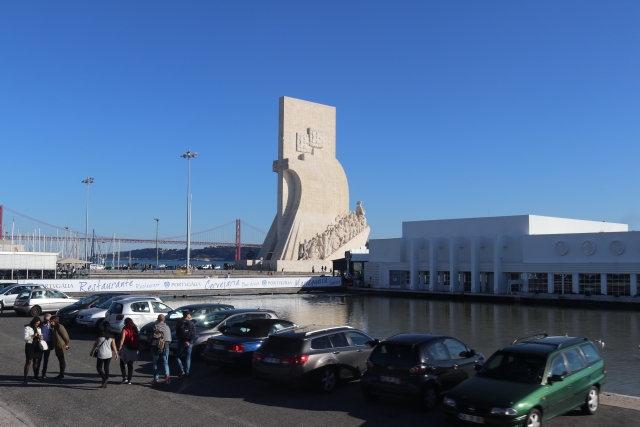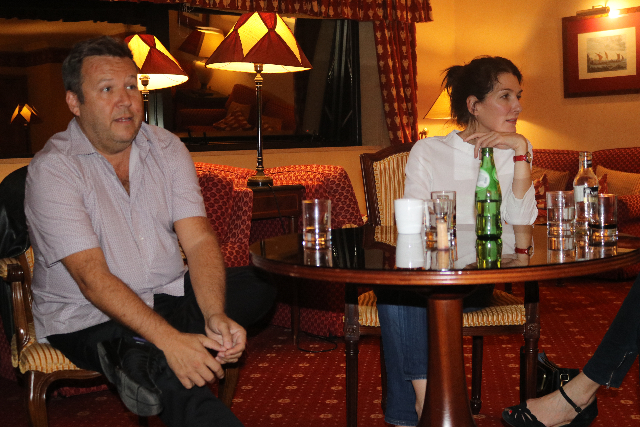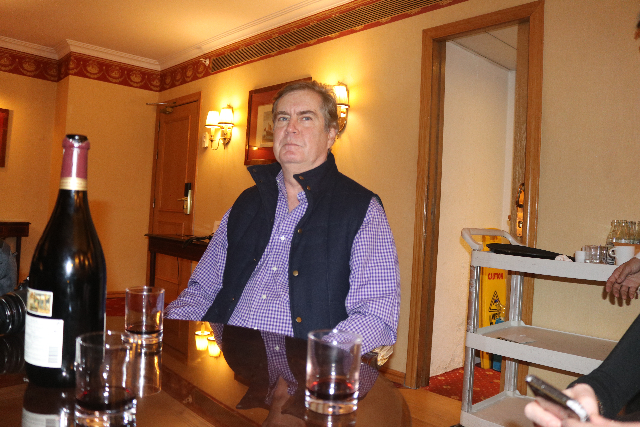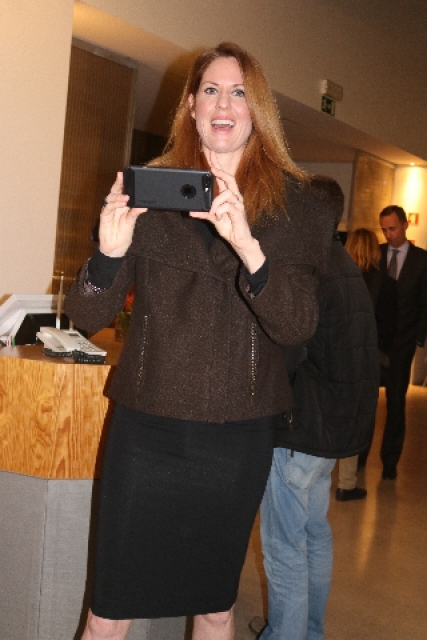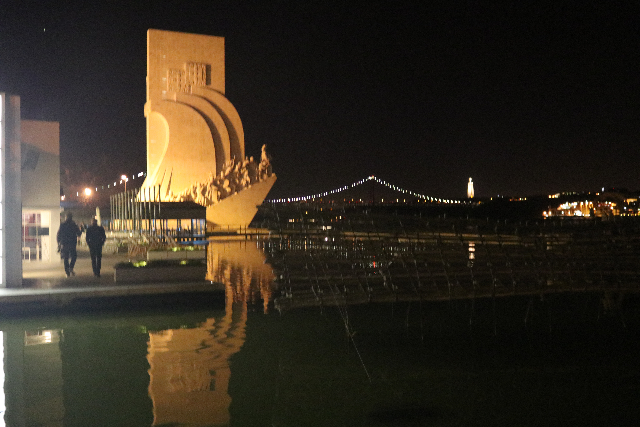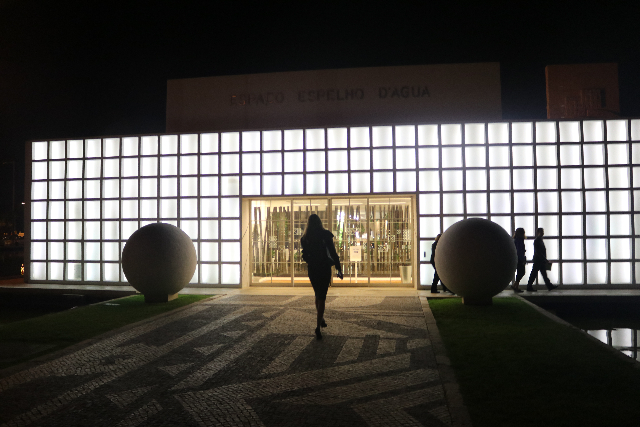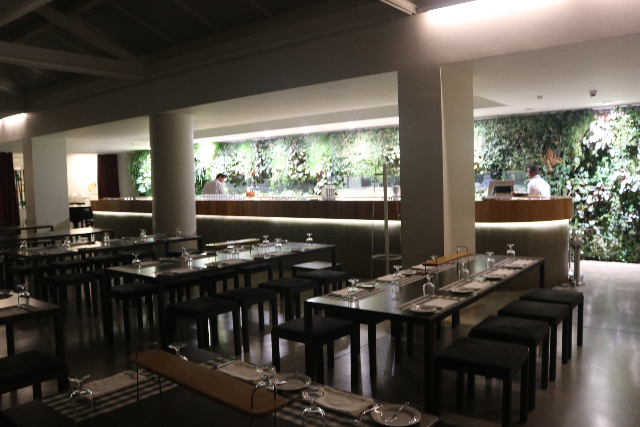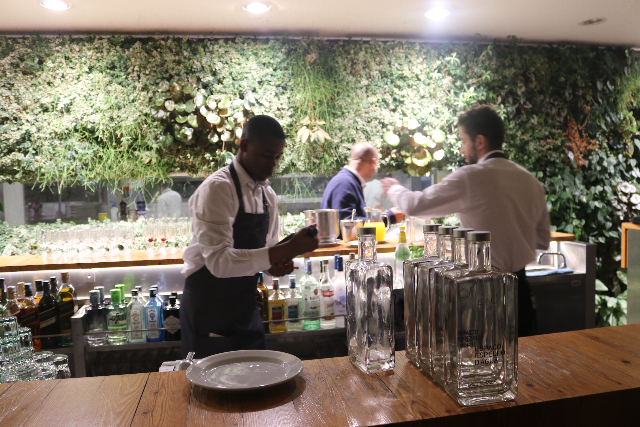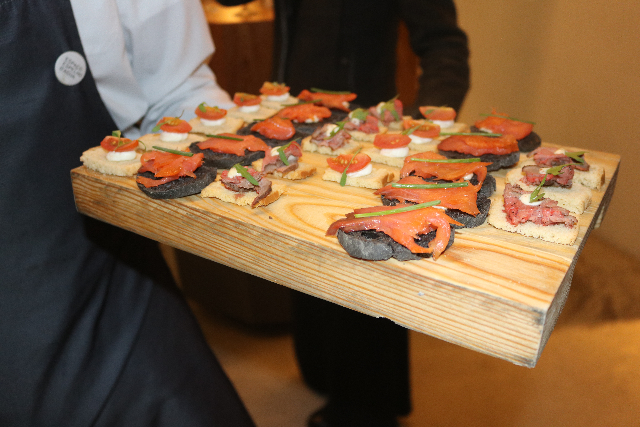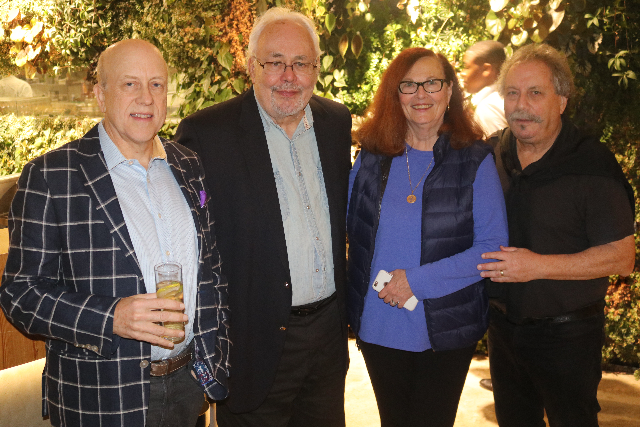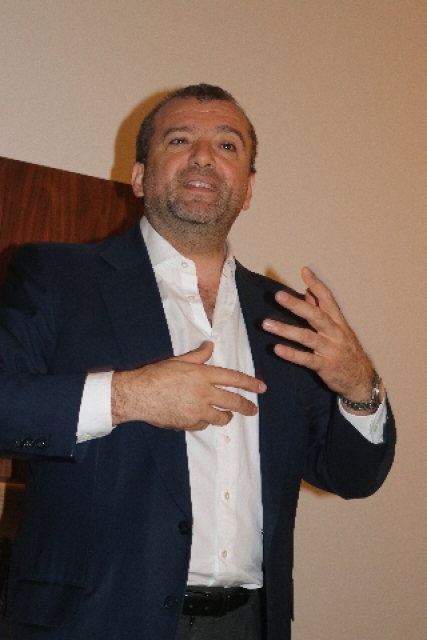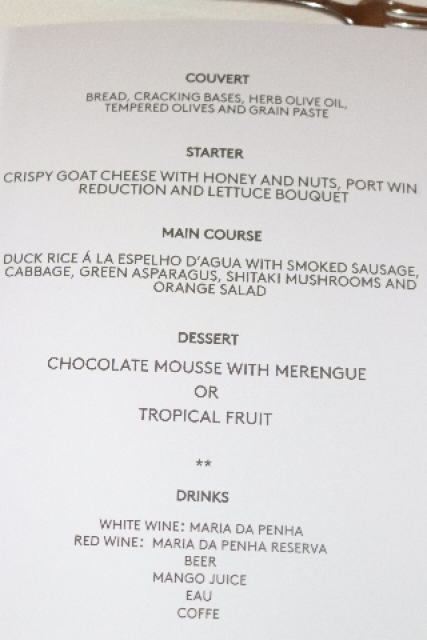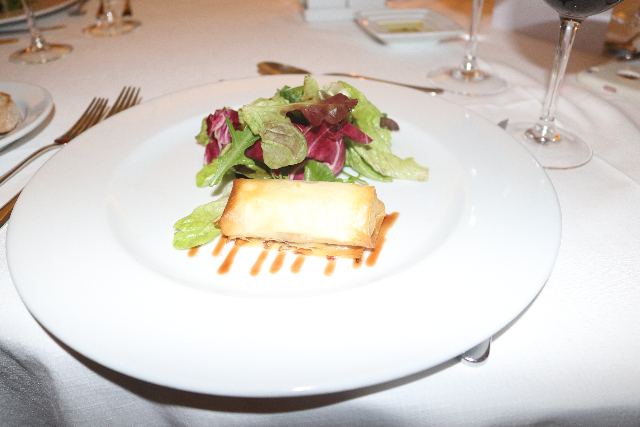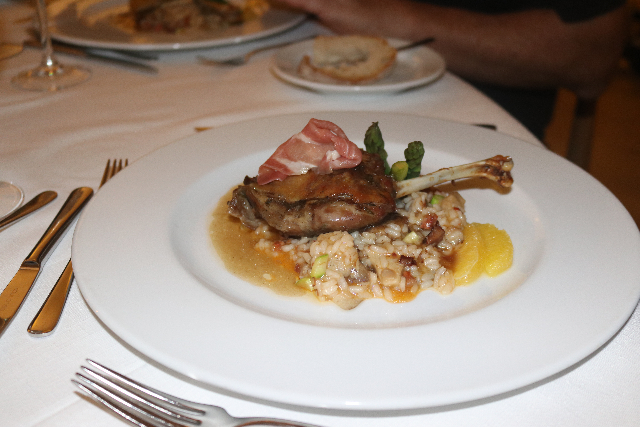TAP Wine Tour of Portugal
Day One in Lisbon
By: Charles Giuliano - Nov 22, 2017
Recently, I joined a group of some 70 global journalists, employees, and experts in travel, food and wine for a TAP Wine Tour. There was a kickoff dinner on Monday in Lisbon. That was followed by an intensive schedule of bus and shuttle flights that ended with a Gala and awards ceremony in Porto on Thursday evening. After the tour I remained in Porto with a return flight to Boston on the following Monday.
The buses boarded at 9 AM and averaged four vineyards for the next three days with lunch then dinner ending after midnight. The vineyards presented an average of six wines for tasting and there were five wines each paired with gourmet meals.
While I much enjoy wine with dinner it was quite an adventure to be ‘tasting’ in the morning. One adapts to the ritual of smell, a swirl in the mouth, contemplation of the delicate essence, then abandon the glass or spit. Now and then, particularly when dining, there were wonderful wines that one fully enjoyed.
This was particularly true for spectacular, rare, old vintages of port. During a side trip in Porto with Brad Smith, a port expert, we shared a 1963 white port as well as glasses from 1980. It was an experience one never forgets as the ’63 exploded in my mouth with layer upon layers of after shocks.
Once the bar is set that high it is hard to climb back down. During the tour we experienced spectacular wines, beyond the famous ports, which change forever one’s perception of Portuguese wines. There was particularly a great range of fruity, crisp, refreshing and affordable whites. In general, Portuguese wines, other than port, are less well know and undervalued. Like Chile, Portugal, with some exceptions, got a late start in the high end wine business.
There are several hundred grapes grown in Portugal. Some winemakers discussed experimental plantings including replanting ancient varietals. In instances it is a process of elimination to find the right balance of variety of grapes, terroir, climate, temperature and altitude. Even in a given region very different wines result from nuances of conditions. The top of a steep slope creates a different fruit than at a lower altitude. All of these variations were discussed in great detail.
Not all that is grown is harvested. Only the best fruit is used and grapes are left on the vine, as we discovered when visiting in November. This is left for birds or composted.
A year with harsh conditions and a small yield may result in a spectacular and expensive vintage. In drought conditions particular vines have the ability to create deep roots in complex soil resulting in rich nuances of flavor. An abundant harvest from a year of rain and sun may not produce sugar for a better than average wine. Often this means more time in barrels before being bottled. An average duration appears to be 18 months. Some wine is meant to be consumed within several years of harvest while the best ports take decades to reach their prime. In the bottle some wines are known to go to sleep for years only to reawaken spectacularly.
We learned that along the Douro River is the most costly region in the world to grow grapes. There is enormous labor involved in the cultivation and harvesting of the grapes. Only wine of this region may be designated as Port.
It is sometimes referred to as the Alto Douro (upper Douro), as it is located some distance upstream from Porto, sheltered by mountain ranges from coastal influence. The region has Portugal's highest wine classification as a Denominação de Origem Controlada (DOC).
For most of us who were young and hip in the 1960s the norm for Portuguese wine was Mateus which came in a distinctive ceramic bottle. Who knew, back then, when kids got a cheap buzz on Boone’s Farm Apple Wine? Few of us anticipated maturing into wine connoiseurs.
Much has changed in the decades since then as Americans have evolved from Bud Light to craft beers and local breweries. For the most part education in wine is still a work in progress. There is a great range of very good wine available for $20 a bottle particularly if one is willing to lay it down for a couple of years.
Buying by the case and storing for a couple of years works well for me. Mostly, that entails French reds. Recent travel to Napa/ Sonoma and now Portugal has broadened my range. Enjoying fine wines at home, sharing special bottles with guests, makes one really annoyed at paying $12 a glass for basically jug wine at restaurants.
At a gallery vernissage, when possible, I would prefer to enjoy a good beer rather than a cheap wine.
The TAP Wine Tour, on every level, was a once in a lifetime experience. Even if one could afford to replicate the itinerary it would not entail the access to award winning executives and winemakers. This entailed glimpses into quintas or estates that are homes to generations of owners and rarely open to the public. The exotic wines and learning curves were off the charts.
TAP (Transportes Aéreos Portugueses) was founded in 1945. In June 2015 the company was semi-privatised and became majority-owned by the Atlantic Gateway Consortium, led by David Neeleman, who founded JetBlue, Azul and co-founded WestJet Airlines, together with Portuguese entrepreneur Humberto Pedrosa. The Atlantic Gateway Consortium purchased 61% of the carrier from the government of Portugal in 2015, with an option to buy the Portuguese government's remaining 34 percent stake in 2018.
This deal was completed at the end of the conservative government's mandate. In October 2015, a new liberal government sought to return majority control of the airline to the state. In February, 2016 a deal with the private consortium was signed, which indicates that the company is 50% owned by the Portuguese state, 45% by the Atlantic Gateway Consortium, and another 5% available shareholder to collaborators and employees of TAP.
In the past two years there has been expansion of routes, an increase of passengers, renovation and upgrade of the fleet. Since 2015, the number of weekly transatlantic flights has increased from 16 to 35 currently. Destinations include Boston, Miami, New York/ Newark and NY/ JFK. Five weekly Toronto flights were added recently.
The Lisbon/ Porto route has been upgraded to 16 daily flights and there has been an expansion of European connections. In addition to an expansion and retrofit of the fleet from 80 to 88 aircraft in the past two years more are in the pipeline.
Even flying flat in business class, it is impossible for me to sleep during a flight. That’s no fault of the superb service, cuisine and selection of wines.
Arriving at the upscale Hotel Dom Pedro, with some reluctance by staff at the front desk, we were assigned rooms earlier than normal check in time. Following a power nap of a couple of hours we met in the lobby. My travel companions, Phil Kampe and Maria Revely, had a specific plan. Never having been in Lisbon, Brad and I walked for 15 minute to a hub to join a bus tour. It allowed for all day on and off stops. In our case lasting for an afternoon.
As part of our adventure Brad had a couple of wine shops to track down before lunch at a sidewalk café. The shop had several hundred bottles mostly of port. The discussion and tasting lasted about 90 minute.
From the open upper deck we got a terrific overview of the city, its primary points of interest, many museums and spectacular waterfront.
For a moment, in an acid flashback, I felt like I was back in San Francisco. Golden Gate Bridge looks amazingly like the one in Lisbon. The 25 de Abril Bridge is a suspension bridge connecting the city of Lisbon to the municipality of Almada on the left bank of the Tagus river. It was inaugurated on August 6, 1966, and a train platform was added in 1999. It has a giant Christ with outstretched arms on top. It reminds one of the colossus that dominates Rio.
Prior to a preview dinner we were invited to a VIP suite for a meet and greet with Gareth Edmonson-Jones, the Australian born and LA based, PR person who arranged our trip.
The dinner was hosted by Abilio Martins, TAP’s vice president of marketing and communications. He discussed the progress of the past two years with a focus on superb in flight meals designed by Michelin chefs. In September, Kampe, who writes on wine and travel for Berkshire Fine Arts, with seven other experts blind tested hundreds of Portuguese wines. The final selection to be served during flights was to be announced following the Gala in Porto that ended the Wine Tour.
When the initial cut was made the final candidates were blind tested in the air during commuter flights to Prague. Phil and Maria have richly described to me that unique phase of this project. Apparently, altitude has an impact when tasting wines.
Seated at our table was an aviation reporter, Mary Kirby, publisher of the online site Runway Girl. She asked Martins technical questions about current and anticipated fleet upgrades and additions. It presented a profile of an airline looking forward to transition and change. My questions involved investment and the transition from government to shared and private control. Asking about the equity of the airline he evaluated it at some two billion Euros.
There are unique features in planning or transitional phases. For international flights, currently, there are two categories; economy and business. Given that individuals are in general growing taller and wider how does that equate to space in long flights?
As an analogy Martins described an airplane interior as the world’s most expensive real estate. Economy means that the young and fit can enjoy a weekend flight from Lisbon to Rio. Those who need the space to endure long flights must be willing to pay for it. TAP will follow the industry model of adding economy plus seating.We have found those upogrades to be well worth it.
Martins appeared to enjoy the challenge of tough questions and was adroit in providing the right answers. There was the sense that TAP is in a phase of investment, transition and dramatic change.
After a fine meal, wonderful wines, and lively conversation we returned to the hotel with new friends. The fun began at 9 AM the next morning.

